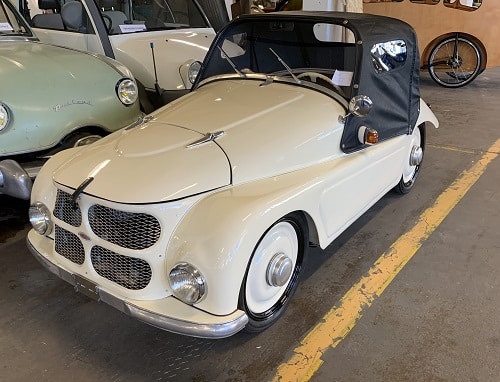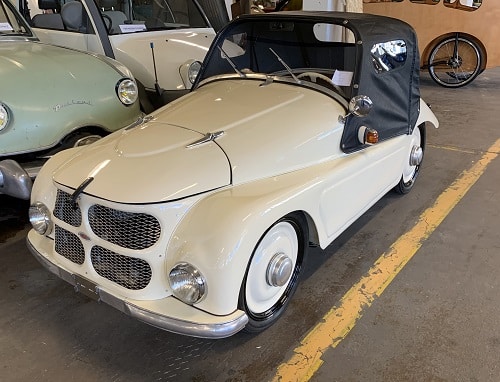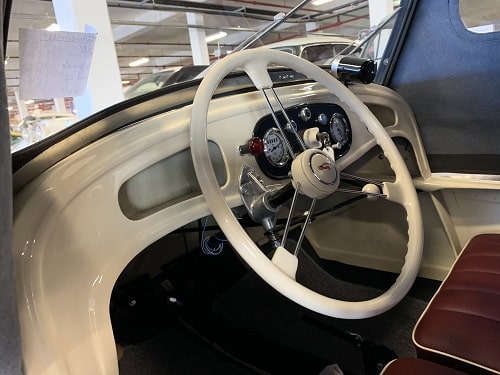
Kleinschnittger F-125- 1956

Paul Kleinschnittger was a tinkerer who had emigrated to Germany from Russia in the 1930s. His concept for an inexpensive mode of transportation more practical than a motorcycle, yet offering comparable efficiency, was put on hold during the Second World War. Afterward, he set about making a proper prototype, but resources were scarce. He reverted to recycled metal; salvaged bicycle wheels and bits and pieces of scrapped airplanes and military vehicles. His single-headlamp runabout first appeared in 1949, using motorcycle fenders and a Plexiglass windshield he took from a crashed fighter plane. It was powered by a 98cc rear-mounted DKW scooter engine.
Walter Lembke, a Hamburg businessman, recognized the appeal of an affordable car that could be mass produced, and decided to help finance a small factory of 50 people. As the prototype wasn’t quite suitable for widespread production, Paul quickly redesigned the car, making it slightly bigger; it measured just 114 inches long and 48 inches wide. (31” shorter and 3” narrower than the Crosley Hot Shot!)
The Kleinschnittger F-125s were handmade in Arnsberg, Germany, from April 1950 until August 1957. In the early days of production, their aluminum bodies were sourced from army surplus cooking pots and pans. They were hammered flat, shaped, and riveted together instead of welding to save cost. They ramped up the engine to a 125cc single-cylinder two-stroke engine that sent power through a three-speed gearbox to the front wheels. It produced 6 hp and a top speed of roughly 43 mph. Each of the four wheels featured fully independent rubber band suspension instead of the more traditional leaf or coil springs—again to cut cost. It also had four-wheel cable brakes, and most came equipped with an under-dash rope pull-starter—though an electric starter could be added for an additional 200 DM (then, about $48).
After 7 years of production, sales diminished and the Kleinschnittger factory shut down. The cars had been surpassed by other microcars such as the Isetta and Goggomobil, and the increasingly popular VW Beetle. While Kleinschnittger did make several prototypes for larger 250cc-engined sedans and a 50cc scooter, he couldn’t find another financier, and in 1957 filed for bankruptcy. Afterwards, he bought back all the leftover parts and kept servicing them. He became a beloved figure in the microcar community and supplied spares to his fans until his death in 1985.
Specifications :
Manufacturer: Kleinschnittger Werke GmbH
Country of Origin: Germany
Drivetrain Configuration: Front-engine, front-wheel drive
Engine: Air-Cooled, 125 cc, two-stroke (JLO)
Transmission: 3-speed gearbox with ratchet (no reverse gear), driving the front wheels by chain
Top Speed: 44 mph
Years of Production: 1950 to 1957
Number Produced: About 2,000
Original Cost: DM 1,995 ($476)

